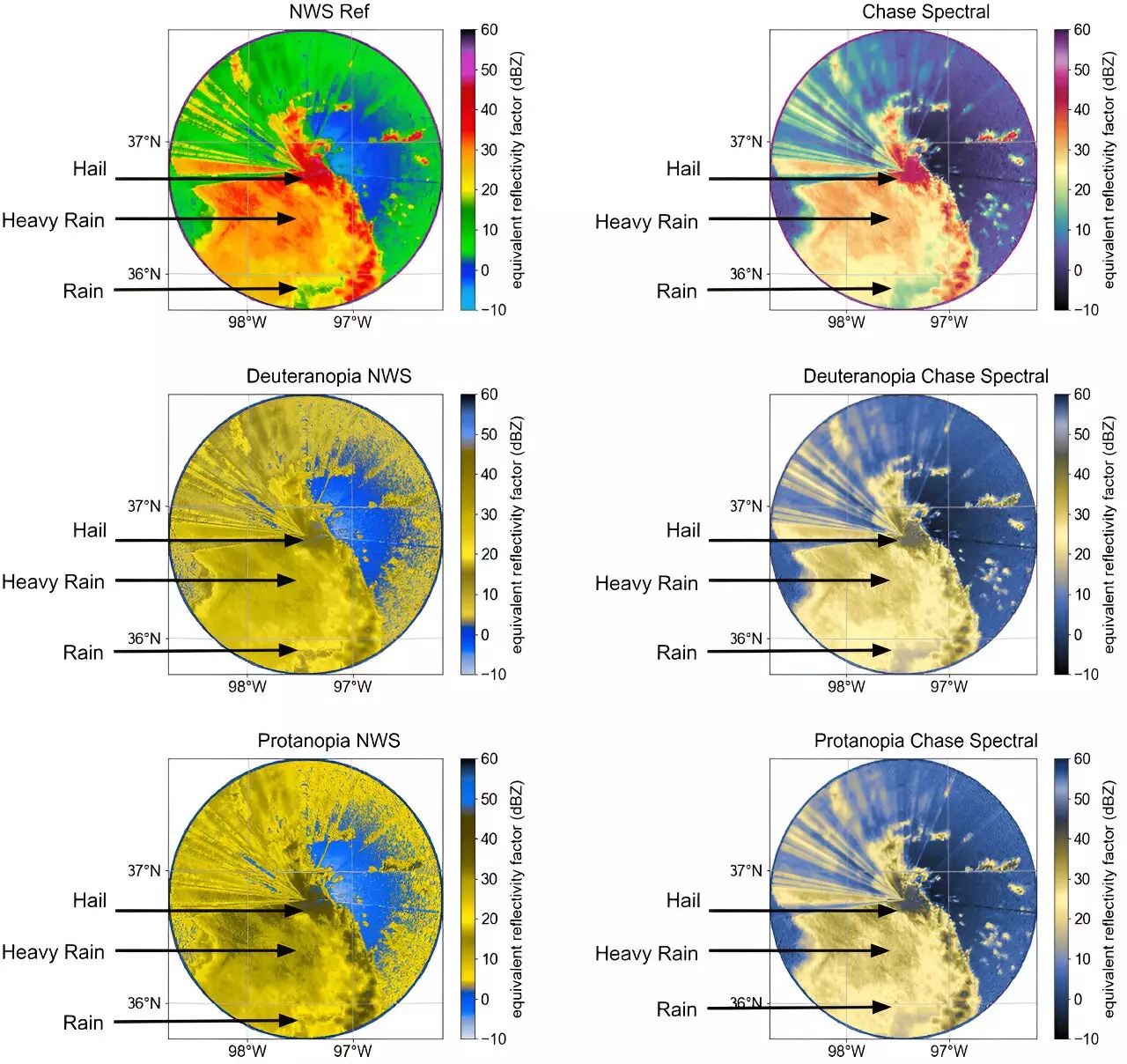Color Vision Deficiency (CVD) affects a significant percentage of the population, including genetic males and genetic females. For those working in fields that heavily rely on color representation, such as meteorology, having CVD can pose unique challenges. The traditional colormaps used in weather radar maps often fail to consider the needs of individuals with CVD, making it difficult for them to interpret and analyze data effectively.
Researchers from the U.S. Department of Energy’s (DOE) Argonne National Laboratory recognized the importance of creating CVD-friendly colormaps in the field of meteorology. Their work focused on developing colormaps that would highlight crucial information about weather patterns, such as cloud characteristics and precipitation intensity, while also being accessible to individuals with CVD. By utilizing the Python programming language tools, they were able to create new colormaps that provided distinct color representations for different weather phenomena, from drizzle to rain to hail.
Through extensive testing and collaboration with the CVD community, the researchers found that the new CVD-friendly colormaps were more interpretable and inclusive compared to the default colormaps currently in use. Radar researchers who participated in the study acknowledged the significance of having colormaps that cater to individuals with CVD, as it enhances their ability to accurately interpret data and make informed decisions in their work.
To ensure that the new colormaps were accessible to a wider audience, the researchers made them available in a GitHub repository used by various open-source radar software packages. They also presented their findings at scientific conferences worldwide, inviting feedback and input from the meteorological community. By actively involving individuals with CVD in the development and testing of the colormaps, the researchers were able to create a more inclusive and relevant visualization tool for all users.
The introduction of CVD-friendly colormaps in meteorology not only benefits individuals with CVD but also promotes equitable scientific visualization practices. By incorporating diverse perspectives and accommodating different visual needs, the research team has set a precedent for inclusive design in meteorological tools and resources. The availability of CVD-friendly colormaps ensures that all users, regardless of their color vision abilities, can engage with and understand weather data effectively.
As the research team continues to develop new colormaps and engage in outreach activities, their ultimate goal is to establish a global community practice around CVD-friendly visualization in meteorology. By raising awareness about the importance of accessible colormaps and promoting inclusivity in scientific research, the team aims to create a supportive environment for individuals with CVD in the meteorological field. With the landscape of meteorology evolving, the utilization of CVD-friendly colormaps is expected to become standard practice for future meteorologists, ensuring that weather information is communicated accurately and inclusively to the general public.


Leave a Reply